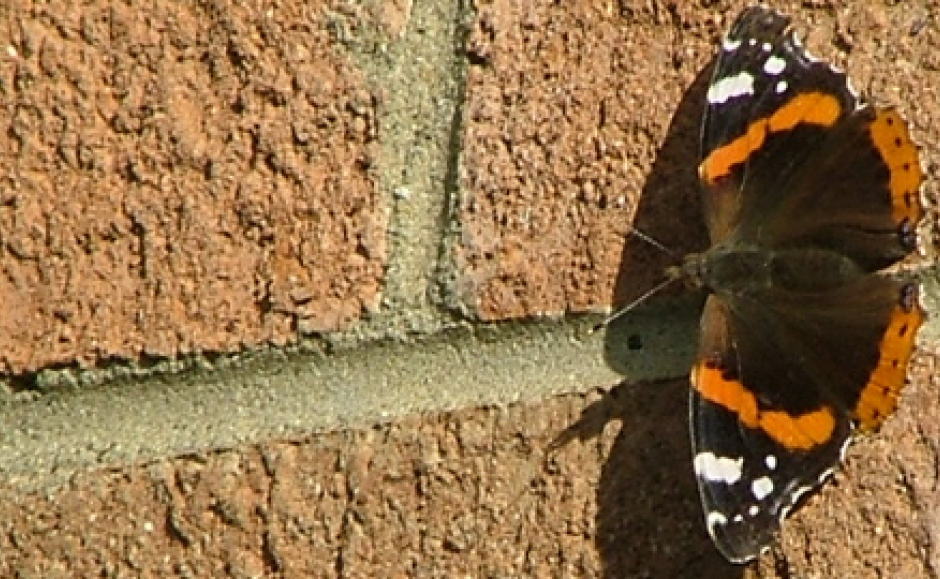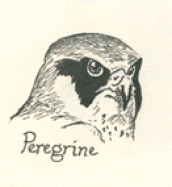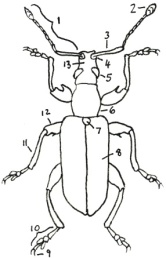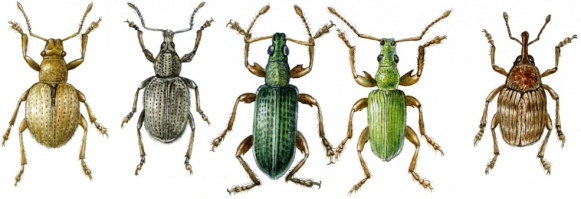

Weevils
Structure
Weevils are fairly distinctive Beetles, the front of the head is elongated to form a rostrum.
1 Antenna, 2 Club, 3 Scape, 4 Scrobe, 5 Compound eye, 6 Thorax, 7 Scutellum, 8 Elytron (pl elytra), 9 Claw, 10 Tarsus, 11 Tibia, 12 Femur (pl femora), 13 Rostrum
The head tends to be fairly small & has a pair of compound eyes near the base of the rostrum. At the end of the rostrum are the mouthparts. In all British species, these are adapted to feeding on plants. The first antennal segment is often long and called the scape. The antenna ends in a club.
All Beetles have their front pair of wings hardened to form a protective pair of wing cases or elytra. In Weevils these cover the whole of the abdomen. The bodies of many weevils are covered in scales, & this helps to identify different species.
Development
Weevils are quite a diverse group, & so demonstrate various ways of developing. All undergo complete meta-morphosis, ie egg to larva to pupa to adult. The larvae of each species tend to feed on a particular plant species, often only a certain part of that plant, eg roots, stem, leaves, fruit, etc. So, after mating, the female will lay her egg in the appropriate place. For example, the Nut Weevil gnaws a hole in a hazelnut with her rostrum and deposits her egg inside. The larva hatches after 1-2 weeks & develops & pupates before emerging as an adult.
Left to right: Strophosomus melanogrammus, Otiorhynchus singularis, Phyllobius calcaratus, P. argentatus, Coeliodes ruber.
We are located at:
Beech House
Church Road, Stockton
Beccles
NR34 0HJ
Contact us today!
If you have any queries about any of our products or indeed ask anything about insects, please contact us:
1508548024 1508548024
Or use our contact form.
We now have a Buy Me A Coffee page if you would like to support us.
https://www.buymeacoffee.com/philwilkins
Get social with us.
Tweet this page
Tweet


